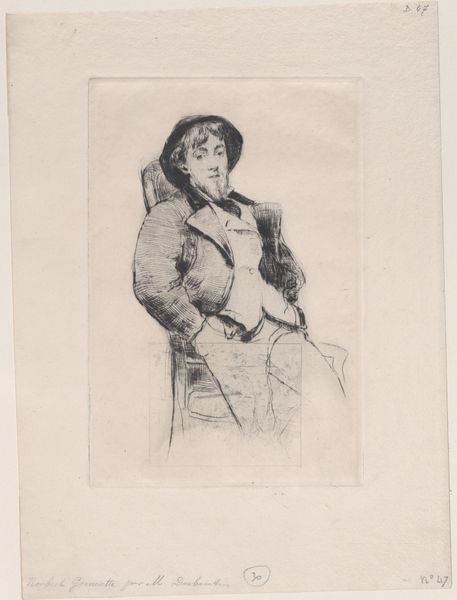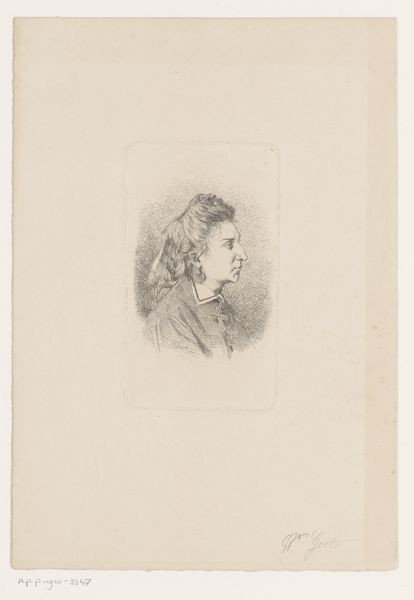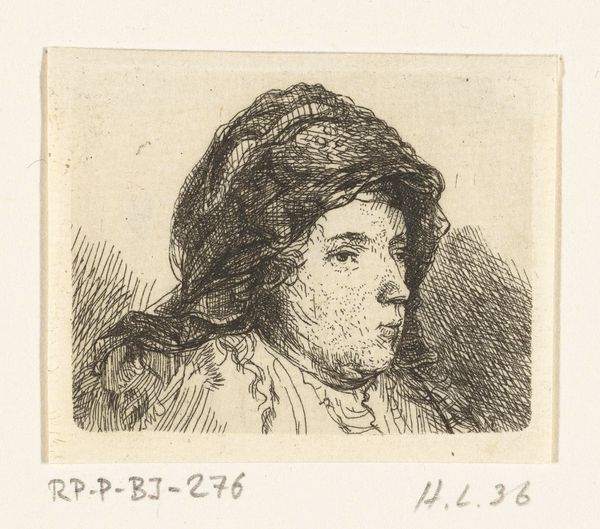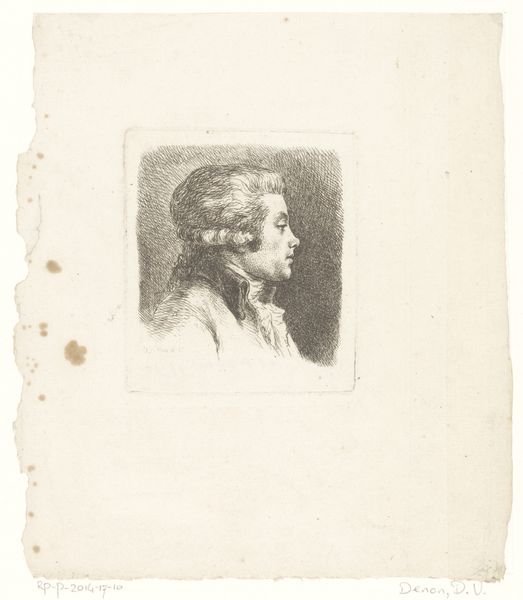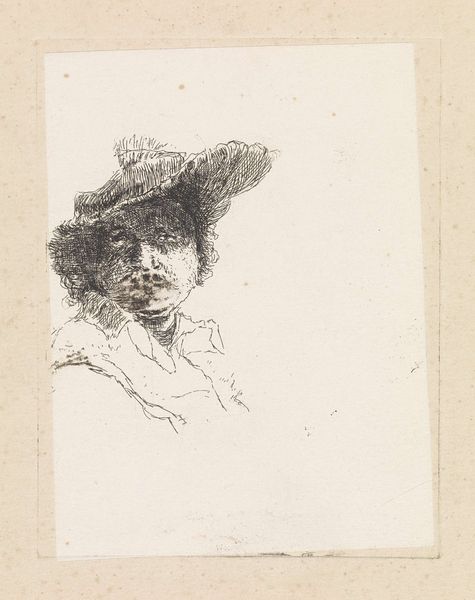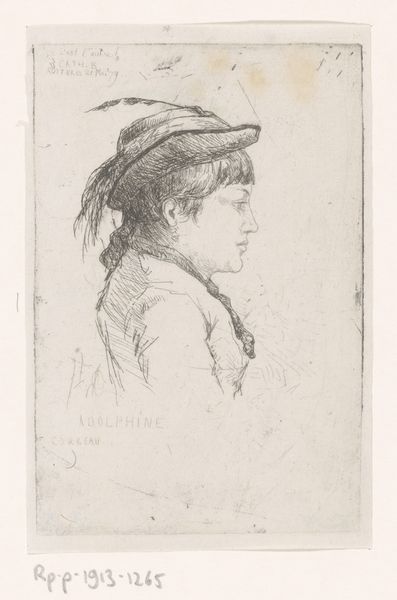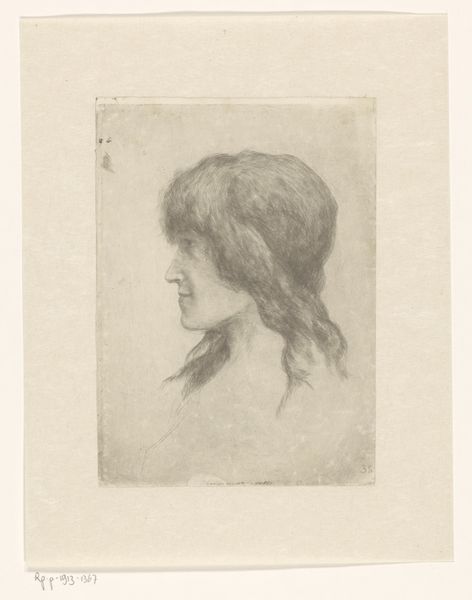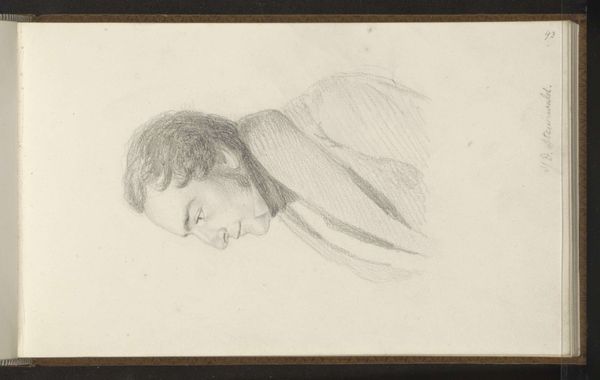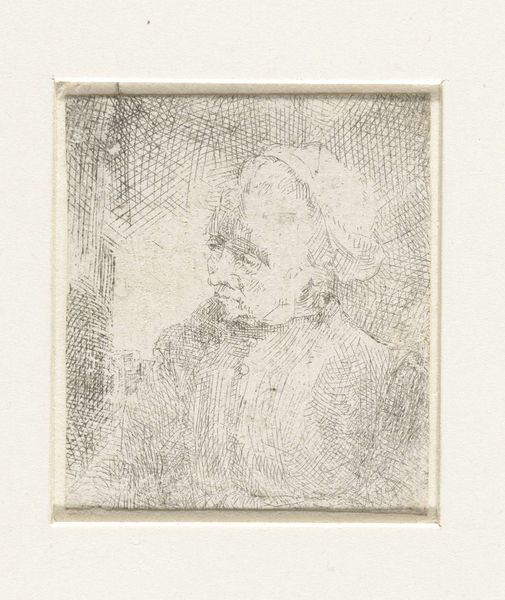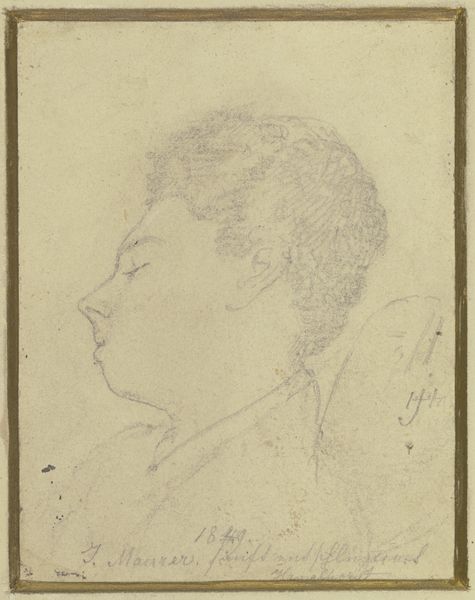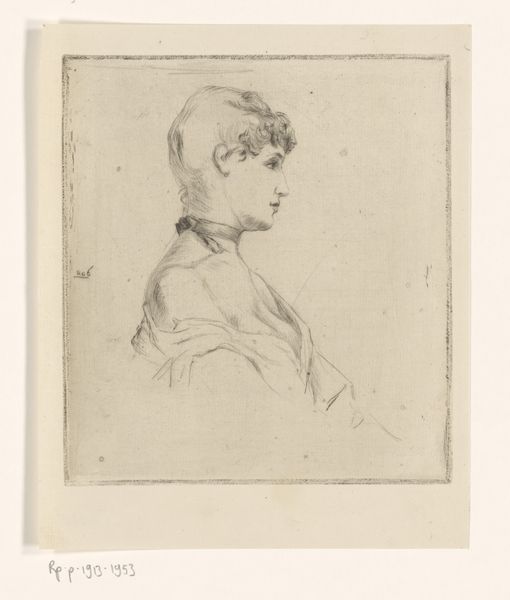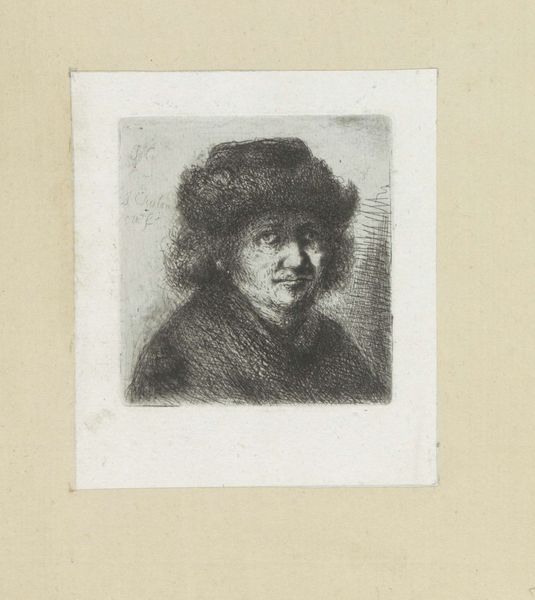
drawing, print, etching
#
portrait
#
drawing
# print
#
etching
#
line
Dimensions: height 77 mm, width 77 mm
Copyright: Rijks Museum: Open Domain
Curator: Here we have a small etching entitled "Portretbuste van een vrouw met doek om haar hoofd," or "Portrait Bust of a Woman with a Cloth Around Her Head." It was created by Ernst Willem Jan Bagelaar sometime between 1798 and 1837. Editor: The image is haunting; the figure’s gaze avoids yours, cast downward and to the side. The detail of the etching makes her almost seem like a ghost. Curator: Bagelaar was working during a time of massive social upheaval, as traditional structures were beginning to break down across Europe. I see echoes of Neoclassical portraiture here, with its emphasis on the individual, but the scale feels much more intimate. Editor: The cross-hatching really emphasizes the texture of the fabric wrapped around her head. You can almost feel the rough weave of the cloth. It's interesting how an inexpensive, easily reproducible material like an etching can carry such tactile qualities. It speaks to the democratization of art making and how an everyday experience could be brought to a broader audience through prints. Curator: Certainly, the reproducibility of etching was becoming increasingly significant. Think about how printed images started circulating revolutionary ideas at this time! Bagelaar’s portrait may be of an ordinary woman. Prints could depict, and thereby valorize, ordinary people. Editor: Absolutely, but there's also a potential flattening of lived experience. Mass production has always had a relationship to disposability. How might Bagelaar's work navigate those issues of labor and class in his era? Curator: Perhaps Bagelaar sought to capture her individuality with this attention to line, an antidote to disposability, as you say. The fine hatching speaks to that care. Editor: I think looking closely at the choices made, from the plate preparation to the pressure of the press, gives us a connection to the people behind the work, and therefore, to the subjects depicted within. It opens a way to see how these art objects can function, communicate, and mean across time.
Comments
No comments
Be the first to comment and join the conversation on the ultimate creative platform.
